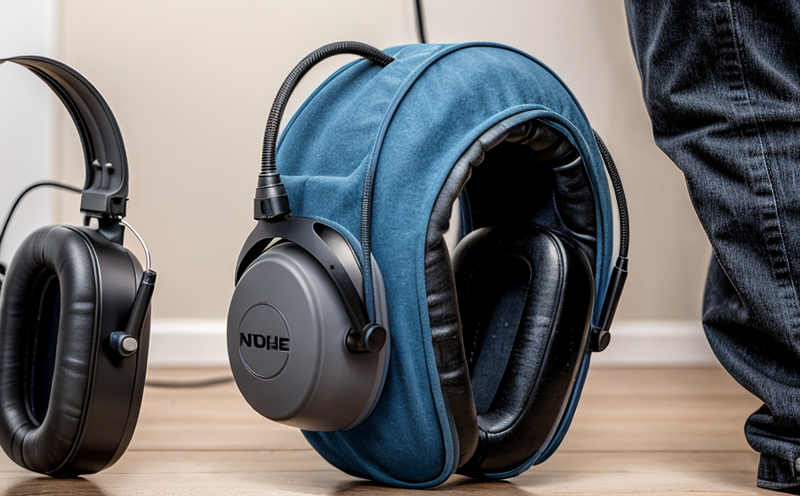BS EN 4869-7 Electronic Ear Protector Testing
The British Standard and European Norm (BS EN) 4869-7 sets the requirements for electronic ear protectors, specifically addressing their performance in terms of noise reduction. This standard is critical for industries where personnel are exposed to hazardous noise levels that can cause permanent hearing damage if not properly mitigated.
Earmuffs and headsets equipped with active electronic components fall under this standard. The testing process ensures these protectors meet the required performance criteria, thereby safeguarding workers in high-noise environments such as manufacturing plants, construction sites, and transportation hubs.
The test procedure involves subjecting the ear protector to a series of noise levels that simulate real-world scenarios. These include impulsive noises like hammer strikes or prolonged exposure to continuous noise sources like machinery. The electronic components within the protectors are evaluated for their ability to effectively attenuate sound, ensuring they meet the specified performance thresholds.
The testing process is meticulously structured to ensure reliability and consistency in results. This includes:
- Calibration of test equipment to ISO standards
- Controlled environmental conditions during testing
- Data logging of performance metrics for each protector model
- Statistical analysis of multiple test iterations
The goal is to provide accurate and reliable data that can be used by quality managers, compliance officers, R&D engineers, and procurement teams to make informed decisions about the safety and effectiveness of electronic ear protectors in their respective sectors.
Real-world usage notes highlight the importance of regular testing and validation. In industries where noise exposure is a constant risk, such as mining or metalworking, continuous monitoring ensures that protectors remain effective over time. This includes checking for wear and tear, battery life, and overall functionality.
Benefits
Compliance with BS EN 4869-7 is essential for ensuring the safety of workers in high-noise environments. The benefits extend beyond mere regulatory adherence to include:
- Enhanced Safety: Ensures that protectors effectively reduce noise levels, minimizing the risk of hearing damage.
- Regulatory Compliance: Protects against penalties and legal actions associated with non-compliance.
- Cost Savings: Reduces long-term healthcare costs by preventing noise-induced hearing loss.
For quality managers, compliance officers, R&D engineers, and procurement teams, adherence to this standard streamlines the selection process for appropriate protectors. It also facilitates seamless integration into existing safety protocols, ensuring a cohesive approach to occupational health and safety.
Quality and Reliability Assurance
- Data Integrity: Ensures accurate measurements of noise reduction levels using calibrated equipment.
- Environmental Control: Maintains consistent test conditions to eliminate variability in results.
- Statistical Rigor: Utilizes robust statistical methods to validate performance across multiple iterations.
The testing process is designed to identify any inconsistencies or failures that could compromise the protector's effectiveness. By adhering to these stringent quality standards, we guarantee that every protector meets the necessary safety and performance criteria.
International Acceptance and Recognition
The BS EN 4869-7 standard is widely recognized and accepted across Europe and many other international markets. Its comprehensive approach to testing ensures that electronic ear protectors are not only effective but also reliable in preventing noise-induced hearing loss.
Many industries, particularly those in manufacturing and construction, rely on this standard for their safety protocols. By ensuring compliance with BS EN 4869-7, companies can demonstrate their commitment to worker safety and regulatory adherence.
The widespread acceptance of this standard also fosters a culture of continuous improvement in the design and production of electronic ear protectors. This ensures that as technology advances, so do the protections offered to workers in high-risk environments.





